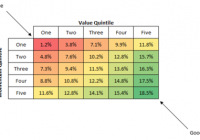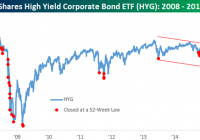2015: How To Make Money In This Lousy Year
It is turning out to be a tough 2015 for stock market investors. The U.S. S&P 500 is trading where it was back on March 31. Fundstrat’s Thomas Lee recently noted that this has been only the second time since 1904 (!) that the S&P 500 has closed the first two quarters of the year with 0% gains. The one strategy that has made diversification look bad over the past five years – staying “dumb and long” in the U.S. stock market – has also run out of steam. There seem to be few other alternatives. After all, the Chinese market crashed, just as I predicted . And who knows how low it would really be if most of the stocks on the Shanghai exchange were actually trading. And back in the United States, even formerly red-hot bullish sectors like biotechnology and cybersecurity have petered out. So What’s Worked in this Market? I follow a lot of different investment strategies, often through various “smart beta” strategies I invest in both personally and on behalf of my clients. Among these strategies, only a few have generated satisfying returns. The First Trust IPOX Index ETF (NYSEARCA: FPX ) is up 9.34% in 2015. And that’s thanks largely to the strong performance of Facebook (NASDAQ: FB ), up 20.7% this year, in which FPX has an 11.86% weighting. The AlphaClone Alternative Alpha ETF (NYSEARCA: ALFA ) has also performed reasonably well, up 6.47%. Among asset classes, private equity is having a solid year, with PowerShares Global Listed Private Equity ETF (NYSEARCA: PSP ) up by 10.28%, boosted by its 8.56% yield. Tough Time for Hedge Funds The smart money across the globe is faring no better. As an average, hedge funds aren’t having a terrible year. But it’s nothing to write home about. The average hedge fund has been up 3.36%, according to Barclay Hedge, while the S&P 500 was up 3.25% over the same time period. But that average hides a multitude of poor performances among the biggest names in the business. Although not technically managing a hedge fund, Carl Icahn, hailed in 2013 as Wall Street’s richest investor, has seen shares in Icahn Enterprises (NASDAQ: IEP ) tumble 12.7% this year. Hedge funds in my neighborhood of Mayfair in London are having a tough time, as well. Odey Asset Management, one of the few remaining “old style” non-institutionalized hedge funds, is down 14.8% after a handful of concentrated bets in small-cap stocks have gone south. The dirty little secret of hedge funds is that most of today’s trading is done by computer. The algorithms of the rocket scientists have squeezed out every last bit of alpha, or superior risk-adjusted returns, in the market. You see that in the performance of trend-following hedge funds, also known as managed futures or commodity-trading advisors, which just suffered their worst month since July 2008 by falling 2.4%. In my view, the only way to make money in this market is “the old fashioned way”: bet big, swing for the fences and hit the lottery (to mix not just two but three metaphors). And that recalls one of my favorite quotes about old style hedge fund investors: “Some people are born smart. Some people are born lucky. Some are born smart enough to be lucky.” And in today’s market, it’s better to be lucky than smart. Buffett’s Lousy Year While the latest round of articles predicting Berkshire Hathaway’s (NYSE: BRK.A ) (NYSE: BRK.B ) imminent demise have yet to appear, Warren Buffett is having a lousy year, with Berkshire shares down 6.28% in 2015. That trails the Standard & Poor’s 500 index, which has gained a mere 1.55%. All of this has analysts scratching their heads. After all, Berkshire trades for less than 1.5x its book value. Barclays has a price target of $259,500 on the stock – 22% above current levels. And after all, Buffett has a reported $16 billion profit on the Heinz and Kraft private equity deals during the last two years. So why the lack of love for the stock? Well, Berkshire’s four largest and highest-profile publicly traded stocks aren’t doing too well. Among American Express (NYSE: AXP ), Coca-Cola (NYSE: KO ), IBM (NYSE: IBM ) and Wells Fargo (NYSE: WFC ), only Wells Fargo has beaten the S&P 500 over the past three- and five-year periods. IBM is worth less than Berkshire paid for it and has lagged behind the S&P by 60%. Coke is still below its 1998 peak. Here’s another irony. My top Buffett clone – Markel Corporation (NYSE: MKL ) – a recommendation in my Alpha Investor Letter newsletter, is hitting the ball out of the park with an investment strategy closely modeled on Buffett’s. And Markel is up a remarkable 28.33% in an otherwise ho-hum 2015, outperforming its model by close to 35% over a mere six months. So how is that for confusing? Psychology: The Small Investor’s Only Real Edge Truth be told, times like these are my favorite times to invest. With CNN’s Fear and Greed Indicator standing in single digits at a mere 7 , this is as close to an ideal time to put my own money to work as I am likely to find (though the index did hit “0” last October). In the absence of infinite gobs of computer power, and with a strong personal aversion to risking too much on any single idea, my only sustainable edge on this market is psychology. That’s why over the years, I’ve trained myself to gain distinct pleasure from investing against Mr. Market’s mood swings. And having had a chunk of cash just waiting on the sidelines, I just invested in several of the worst performing and technically oversold investment strategies in my own 401(k). Will I have caught the bottom of the market? Maybe… or maybe not. But I’m expecting the bets I placed yesterday to be profitable by the end of 2015. Disclosure: I hold FPX, ALFA, PSP, IEP, BRK.B and MKL.

